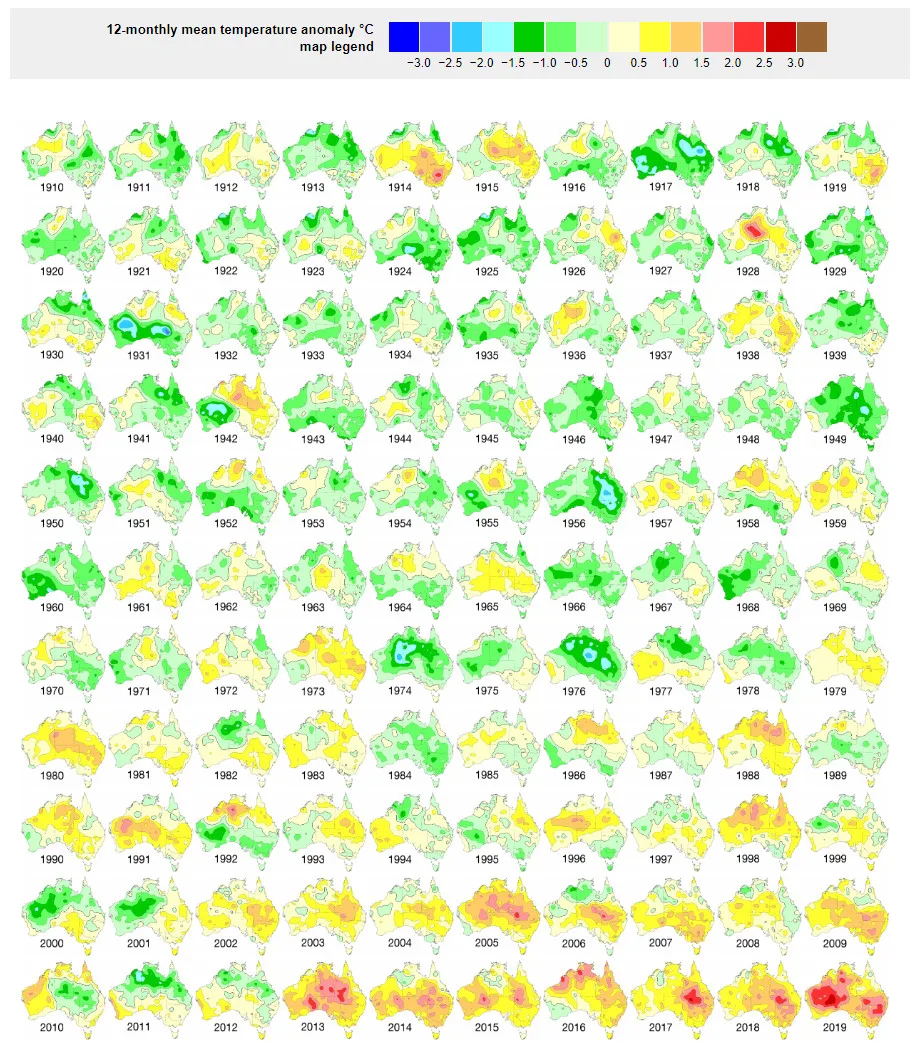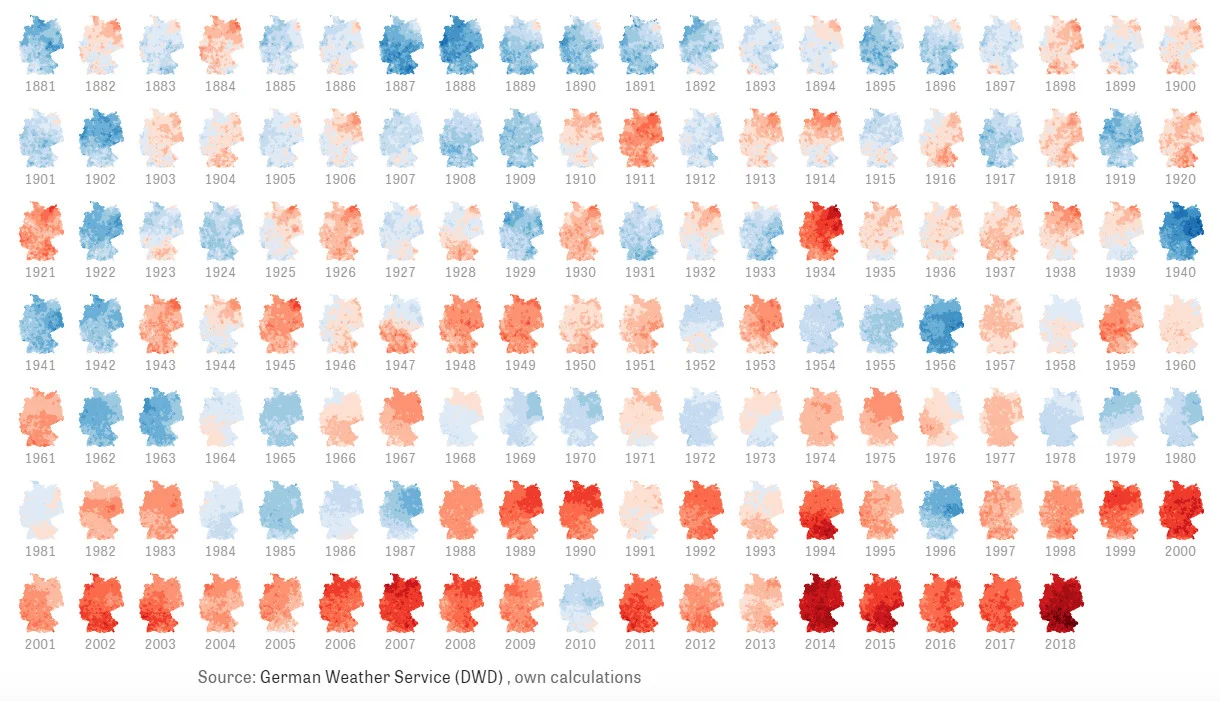Small multiple maps of global heating are the most popular way to visualize how average temperatures have risen over time.
The maps show the anomaly of mean temperature for each calendar year, compared to the average over the standard reference period of 1961–1990.
110 years of Australian temperatures
The colors range from dark blue (more than 3 °C below average), through blues and greens (below average), yellow and orange (above average), and on to brown (more than 3 °C above average)
 Source: bom.gov.au
Source: bom.gov.au
137 years of Germany temperatures
2018 was the hottest year since records started with an average annual temperature of 10.5 ° C. 1940 the coldest with 6.6 ° C.
Source: zeit.de
50 years of the UK temperatures
The maps show the anomaly of mean temperature for each calendar year, compared to the average over the standard reference period of 1961–1990.
110 years of Australian temperatures
The colors range from dark blue (more than 3 °C below average), through blues and greens (below average), yellow and orange (above average), and on to brown (more than 3 °C above average)
 Source: bom.gov.au
Source: bom.gov.au137 years of Germany temperatures
2018 was the hottest year since records started with an average annual temperature of 10.5 ° C. 1940 the coldest with 6.6 ° C.
Source: zeit.de
50 years of the UK temperatures


This post may contain affiliate links. As an Amazon Associate, I earn from qualifying purchases.